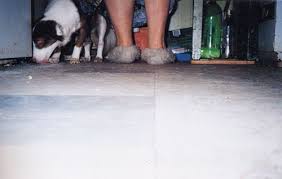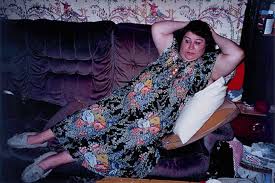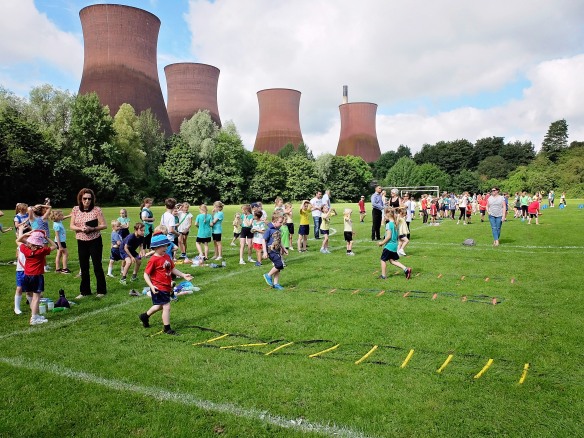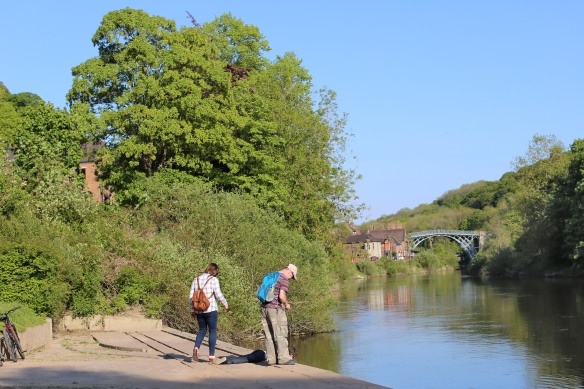What I need to do:
- Choose five or six buildings
- church
- cinema
- YHA
- DeliDale
- Enginuity
- Library
- Produce two to four images of each building
The focus:
- Images need to be effective and attractive
- Show the way in which the spaces are used
- Can include people
Preparation:
- Research each building whether archival or person or both
- obtain a good understanding of how and why the building was designed that way
also:
- develop an opinion on the buildings effectiveness as a usable space
- Use a variety of buildings
Write up:
- Write a short statement demonstrating understanding of the function of the building, the way it was designed to achieve that, and how well it succeeds
- Describe briefly how I initially set about showing the important features of each building photographically
- What did I learn
Church – Holy Trinity Coalbrookdale
I contacted the church warden who was very helpful and agreed to meet me at the church on Saturday 12th March 2016 at 2.00pm.
Margaret, the church warden, gave me lots of information relating to the church and was a life long member having been christened, confirmed and married at the church. Margaret went on to say she’s also mindful that she will take her last service at the church one day.
Coalbrookdale itself is steeped in history however I’ll concentrate on the history relating to the church.
After 3 generations of Darby’s being Quakers, Abraham Darby IV left the Quaker belief behind for the more modern Anglican beliefs and donated money to the town to construct this church. Built 1850-1854, it stands in a commanding position on Church Road.
The church has ironworks visible in the churchyard starting with the iron gates, gravestone surrounds, iron grave markers of varying designs, wonderful stained glass Flemish windows gifted to the church by the Darby sisters, ten bells in the clock tower which ring regularly, stone carvings of members of the Darby family above the carved pews, an amazing painted ceiling given by Muriel Cope-Darby in memory to her brother Lt. Morris Alfred Alexander Darby who fell in war overseas in 1915.
Since the Fourth generation of Darby’s converted to Anglicanism, they are buried in the churchyard as are the parents of Captain Mathew Webb, first man to swim the English Channel.
Cinema – Cineworld, Southwater, Telford.
Southwater in Telford is a new exciting development of leisure outlets including Restaurants, an ice rink and Library. It sits on the edge of the town park and provides the link needed to marry the park with the town.
The cinema in particular has an impressive foyer with the screens sitting above the restaurants which maximises the usable space available.
I planned my visit an decided to seek permission to photograph the foyer area of the cinema. Upon arrival there weren’t any assistants available to ask permission so I thought as long as I avoid photographing people they’re shouldn’t be an issue. This seemed fine until I went to the upstairs area when I was approached and asked what I was doing. I explained I was working on a project for my Photography course but I told I wouldn’t be able to continue. I pointed out to the assistant that there were people around taking selfies and photographing groups using their mobile phones so if I’m not allowed to take photographs they shouldn’t either. The assistant said thats different. I asked how? but when I was told ‘it just is’ I thought I can’t have a debate with someone who can’t answer a question so I left. However, I took the photos I needed on my way out.
Library – Southwater, Telford.
Part of the Southwester development to provide leisure and resources to the the people of Telford and surrounding areas.
The library is a building containing four floors and each is reached either via a lift or escalator thats situated in the middle of the building. This works well as you can see the entire floor from the escalators.
On the day I visited the Library was unexpectedly closed. I’ve had to eliminate this building from my assignment.
DeliDale – Is a local delicatessen\cafe. However, I’d say its a cafe predominantly that sells speciality cheeses and olives. I chose this building because it’s limited on space and I was interested how this translates when photographed.
I asked the owners permission to photograph the inside space and they were obliging but I could only carry out my work when there were no customers in residence. It took several visits but eventually I managed to turn up when no customers were present.
The building was originally built as ‘tuck shop’ which acted as a local newsagents come grocery store. The building was originally build from timber but due to severe flooding a brick building was erected to replace the damaged timber building. The brick building has been subject to two severe floods since, one reaching the top of the front door. The damage was repaired and was reopened and a deli.
Enginuity –
Enginuity is an interactive design and technology centre in Coalbrookdale, Shropshire, England. It is the newest of the ten museums operated by the Ironbridge Gorge Museum Trust and was opened in 2002. The museum’s exhibition floor is divided into four zones: Materials & Structures, Systems & Control, Energy and Design. Enginuity also offers workshops and interactive shows for school groups.
The building that houses Enginuity was previously called ‘The Engine House’ and formed part of the Coalbrookdale Company’s industrial empire. The engine house did contain lots of different engines that carried out various tasks for instance, making iron goods. I asked the Ironbridge gorge archives for photographs taken when the engine house was in service however, I’m still waiting for them. I do have one photograph which shows the use of the space in 1900:

The building was designed to house engines to form a fitting out shop for the foundry.
The Pyramid –
Houses the remains of the water powered blast furnace where Abraham Darby I perfected the smelting of iron with coke instead of charcoal.
I wanted to include this building because the use of it’s space came first and the pyramid was designed and built around it.






































 This photograph was taken at around 10am when the sky was fairly overcast but without any rainfall. I’m certain the light on the wall is from my computer screen and in hindsight should have switched it off first to get a true representation of the natural light coming into the room. However, my screen is emitting light in all the photographs I took so its an accurate picture when comparing light at different times.
This photograph was taken at around 10am when the sky was fairly overcast but without any rainfall. I’m certain the light on the wall is from my computer screen and in hindsight should have switched it off first to get a true representation of the natural light coming into the room. However, my screen is emitting light in all the photographs I took so its an accurate picture when comparing light at different times.

